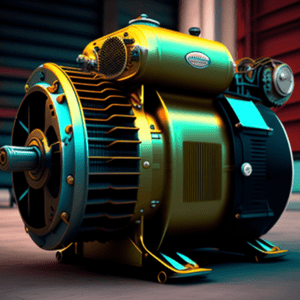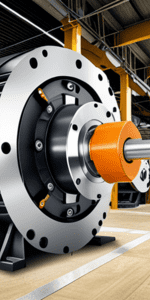Check and Test the Performance of Electric Motors According to Chinese Rules
Industrial electric motors power a wide variety of applications in the global economy. The International Energy Agency (IEA) estimates that the vehicle industry is responsible for up to 70% of all energy used in industrial settings, 35% of all energy used in the commercial and service sectors, and 45% of all electricity generated globally. The fact that motor-related downtime costs thousands of dollars per hour demonstrates the importance of electric motors in a variety of industrial applications.
They are responsible for greenhouse gas emissions and environmental damage from power plants. They are also significantly responsible for the rapidly increasing energy demand in developing nations. There is a global economic opportunity to improve industrial motor energy efficiency by 20 to 30 percent, with typical payback periods of less than three years. Electric motors are responsible for approximately 15%, or 4.3 billion tons, of the world’s yearly carbon dioxide emissions of 26 billion tons. Increasing energy efficiency is one of the most cost-effective and risk-free solutions to reduce growing energy consumption and greenhouse gas emissions.
Employ an Efficient Motor for the Following Reasons:
- Decreased operational costs
- A more quiet and calm operating
- Boosted the motor’s reliability and longevity
- Lowered its greenhouse gas emissions.
Table of Contents

Commencing the Motor Analysis:
Windage and friction losses, as well as losses in the stator, rotor, and magnetic core, account for a portion of the energy that electric motors lose. These losses are accountable for the decrease in motor efficiency. Considering the energy consumption and industrial use of electric motors, it is evident that efficiency evaluation and minimal energy performance criteria are required and applicable. The accuracy of the estimates for motor efficiency and motor loss is dependent on the chosen test technique. There is no single testing method employed across all industries. Although it is a simple idea, it may be challenging to evaluate and validate the energy efficiency of a motor using various criteria.

Internationally Acknowledged Techniques for Measuring Effectiveness:
In industrial applications, it is typical to discuss the following testing techniques: IEEE 112-2004 is a popular test technique for polyphase motors and generators. 2014, International Electrotechnical Commission, IEC 60034-2-1, Tests. Methods for calculating the efficiency and losses of rotating electrical equipment. JEC 37 was produced by the Japanese Electrotechnical Committee as a standard for induction devices. IEEE Standard 112-2004
This strategy comprises ten energy efficiency testing processes. To utilize the most important:
- Basic input and output testing.
- Confirm that the input and output are loss-free.
- Back-to-back test for linked machines with separation loss.
- Utilizing smoothed residual losses for load loss calculation
- The Eh-star strategy
The IEC standard test encompasses three primary categories:
- Calculating the input-output power of a machine.
- Back-to-back input-output power measurement of two machines.
- Losses from a single machine were tallied.
The test procedures for the Japanese JEC standard 37 ignore the extra load losses entirely. Among the very major economic and environmental benefits of enhancing the energy efficiency of machines and appliances is a reduction in operating costs for enterprises. In all major Chinese towns, including Beijing, Shanghai, Guangzhou, and Shenzhen, we provide motor start analysis services.

RELATED NEWS








Coordination


RELATED NEWS











